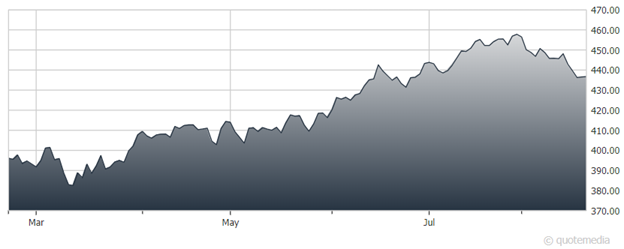A plethora of economic and geopolitical challenges to the health of this baby bull market, such as a soaring 10-year bond yield, an increasing likelihood of additional rate hikes, and a potential economic crisis in China, just caused global equity markets to experience an accelerated attempt to lock in gains from the recent nine-month advance. However, we don’t think this is the beginning of the end of the nascent bull market, writes Sam Stovall, chief investment strategist at CFRA Research.
As of August 17, all major US and international equity benchmarks, including the S&P 500, MidCap 400, SmallCap 600, Nasdaq-100, MSCI-EAFE, and MSCI-Emerging markets indices, along with eight of 11 S&P 500 sectors, broke below their 50-day moving averages, a measure of near-term support.
Many are now testing their 200-day averages, and some have already sliced through this measure of long-term support. Not surprisingly, the technical backdrop has deteriorated, as the breadth of leadership has narrowed significantly.
S&P 500 ETF Trust (SPY)

Today, only 22% of the 153 S&P 1500 sub-industries trade above both their 50-day and 200-day averages, versus 71% at the end of July. Add typically weak seasonality to the mix, and investors may have to endure declining share prices and rising volatility through the end of the third quarter.
But we see the S&P 500 benefiting from this much-needed digestion of gains. Week to date (WTD) through August 17, all sizes, styles, and sectors within the S&P Composite 1500 declined in price, along with 95% of its sub-industries.
Auto manufacturers, drug retail, and independent power producers dropped by more than 7%, while apparel retail, coal & consumable fuels, semiconductors, and steel each gained 1% or more.

















